Bugs fascinated me as a child and I recollect my mother telling me how when small I would during the day collect worms in a jar and at bedtime take them to bed with me. I must have been very small, as I have no recollection of this. However, like most children I do recollect the terrible tortures inflicted on these poor defenceless creatures. Spearing frogs with homemade sugar cane lances, burning ants with a magnifying glass or using the bugs on the rubbish tip as shooting targets, these are just some of the terrifying atrocities committed as a child. I now shudder at the thought and hope that at least some of my conservation work goes some way towards redeeming these past injustices.
Flash-forward 20 years or so and as a student studying Graphic Design I became increasingly interested in the theories of the artist Paul Klee. Klee’s love of nature and curiosity to draw and paint the invisible, mysterious, inner-processes of organisms was inspirational and led to my love for macro photography. Fast-forward another 20 + years and Klee’s words seem to illuminate some inner dark recess in my mind as if opening long drawn dusty curtains on a fresh spring day.
And is it not true that even the small step of a glimpse through the microscope reveals to us images which we should deem fantastic and over-imaginative if we were to see them somewhere accidentally, and lacked the sense to understand them?
Paul Klee, On Modern Art, 1948
Which brings me to this present wet and gloomy December day and I’m now the proud owner of a vintage 1960s Nikon L-Ke microscope with a trinocular head (meaning a camera can be attached without having to remove the binocular eyepieces) along with a selection of good quality Nikon objective lenses. Although a vintage model and almost as old as I am, the Nikon L-Ke that I bought is in excellent condition, is superbly built and I imagine works as well as the day it was made. Finished in black enamel that withstands the test of time and shines as new. The bodywork is excellent and the mechanical stage is in perfect condition. All original with Kohler illumination, phase contrast condenser and coaxial fine and course focus controls. Complete with the lamp assembly, working bulb and transformer which in themselves are rare items these days. It also has very attractive 1960s styling, which provides a nice contrast to my Canon 5D and 7D EOS cameras that I can connect directly to it.

Nikon L-Ke microscope with a trinocular head along with a selection of good quality Nikon objective lenses, phase contrast condenser and original Nikon transformer.
A benefit of my Nikon L-Ke is that it is capable of three different styles of image: (1) is ‘standard’ so-called brightfield where the image has a white background (2) is known as dark field where a black background is achieved and the subject is side lit which provides a very different image to brightfield and (3) so-called phase contrast which provides a pale to mid grey background and the subject is normally shown with a lot of contrast which helps to pick out detail.
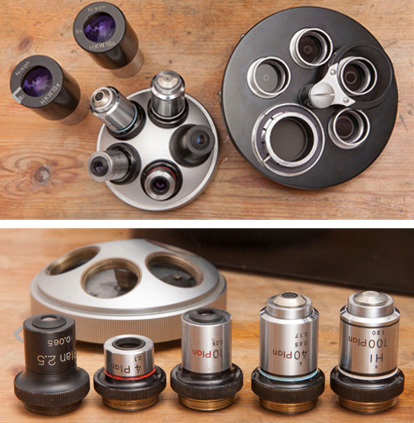
(Top) Universal condenser with turret for brightfield and phase annulus for 10x, 40x, 60x and 100x
(bottom) All plan objectives 2.5x, 4x, 10x, 40x and 100x
Eager to take the next step and examine microscopic life I’ve started with (1) ‘brightfield’. I bought a number of prepared slides to view through the microscope, mainly of insects and aquatic life. It’s a bit of a cliche but microscopy really does open up another world and with a child-like sense of wonder I can peer down the eyepieces and marvel at the wondrous creatures that as a child so captivated my imagination.
Below are a few images taken so far. I’ve very much enjoyed taking them although I must build my knowledge and skills and have a lot to learn. However, let’s take one step at a time. My next step is to try (2) ‘darkfield’ but that will have to wait till a future post, perhaps next month?
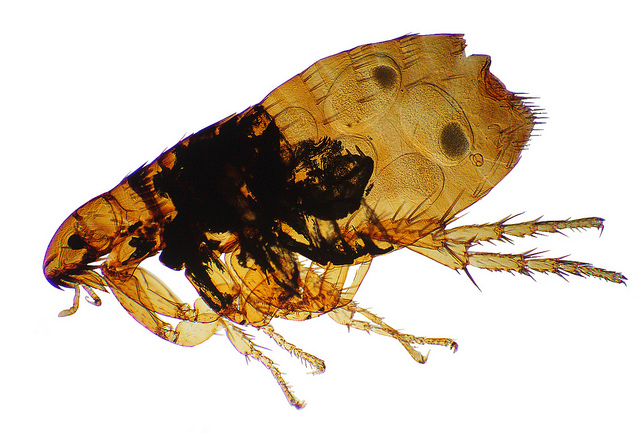
Stained specimen of Flea at 40X, brightfield, 3.2x photo eyepiece with Canon 5D.
The larger sensor of the 5D manages to capture all of the flea although I still had to crop part of the vignetted viewing circle.

Slide specimen of mosquito larvae at 25x magnification, brightfield – stack of 15 in ZS – RGB colour adjustments used to better match specimen as seen through eyepieces.
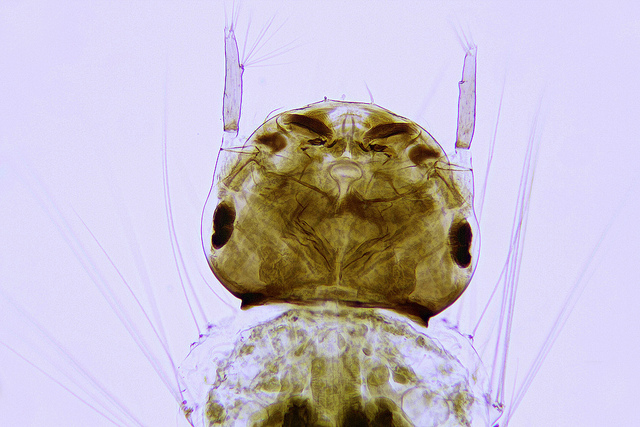
Slide specimen of mosquito larvae at 100x magnification, brightfield – stack of 15 in ZS – RGB colour adjustments used to better match specimen as seen through eyepieces.
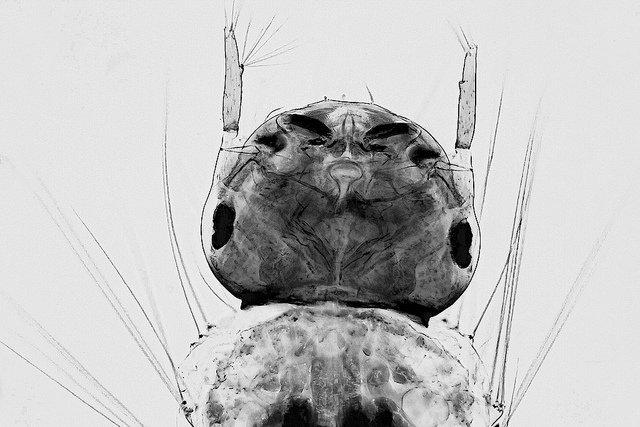
Black and white conversion using RGB channels in Photoshop to increase contrast

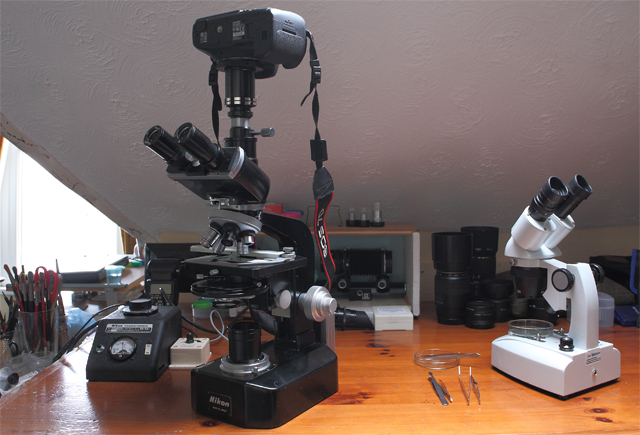
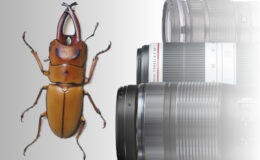
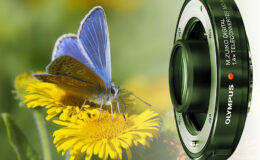
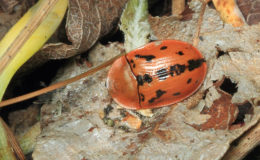
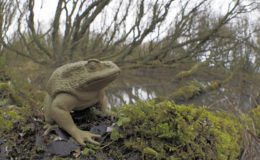
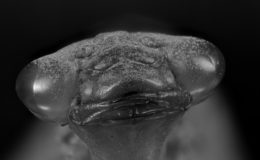
Leave a Comment